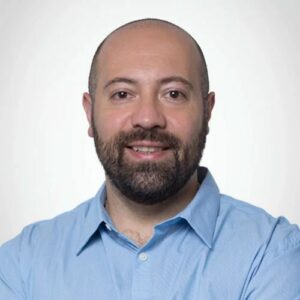Mobile development frameworks are tools that facilitate application development using prebuilt code modules and patterns. They are becoming increasingly popular these days due to their ability to cut development time and project costs. Even though there are many frameworks on the market, two of the most popular ones are React Native and Flutter—each offering different strengths, much like the comparison between Svelte vs React in the web development space.
| React Native | Flutter | |
|---|---|---|
| Creation Year | 2015 | 2017 |
| Creator | ||
| Documentation | React Native Documentation | Flutter Documentation |
| Language Type | Interpreted Language | Compiled Language |
| Typing | Dynamically Typed | Statically Typed |
| TIOBE Rating | Part of JavaScript – #6 (TIOBE Index) | Dart (used by Flutter) – #33 (TIOBE Index) |
| Popularity | High and stable (StackOverflow survey 2021) | Growing rapidly (Google Trends) |
| Applications | Mobile applications | Mobile, web, and desktop applications |
| Performance | Good, but less than Flutter due to the JavaScript bridge | Better due to direct compilation to native code |
| Stability | Stable, mature technology | Stable, but less mature than React Native |
| Learning Curve | Easier for JavaScript developers, harder for beginners | Steeper for those unfamiliar with Dart, easier for Java and C# developers |
| Community Support | Massive (StackOverflow, GitHub etc.), React Native Community | Growing but not as massive as React Native, Flutter Community |
| Development Time | Faster due to JavaScript and live reloading | Similar to React Native, hot reload feature helps |
| Key Advantages |
|
|
| Key Disadvantages |
|
|
| Famous Companies Using This Technology | Facebook, Instagram, Skype | Google Ads, Alibaba, BMW |
| Cross-Platform Support | Supports iOS and Android well, community-driven solutions for web | Supports iOS, Android, web, and experimental support for desktop |
What Is React Native?
React Native is a cross-platform JavaScript-based framework for mobile application development. It was created by Facebook and allows users to create React applications using a component-based architecture.
This framework is open source and uses native components. It enables developers to create platform-specific custom applications using native components. You can use it to develop both iOS and Android applications.
The React Native developer menu has a feature called fast refresh that provides users with real-instant feedback for component changes. If the framework detects any changes in the JavaScript module, it updates mobile components and lets developers see the change in real time without needing a repository rebuild. This rapid iteration cycle is one of the many reasons teams often compare React vs react native when planning cross-platform development strategies.
Advantages of React Native
1. Community-Driven Framework
React Native is a community-driven framework that enables developers to connect with each other. Its online community has tens of thousands of active contributors who extend support and advice to novice developers.
It also has forums that provide code reviews and feedback to developers. You can use them to find catalogs of shared components and their relevant documentation.
2. Faster Performance
Since applications built on this framework run natively on mobile devices, applications are typically quick to load (60 frames per second). It also allows you to publish your apps faster.
3. Faster Development
As discussed above, fast refresh allows developers to see their real-time code changes on the UI window. This speeds up the development process, as the developer does not have to create builds to see their changes.
4. Code Reusability
React Native development companies don’t have to write separate code modules for different mobile platforms, such as Android and iOS. Instead, they can reuse the code from one platform for another.
This increases the efficiency of writing code and allows developers to quickly bring the product to market. This also simplifies the code maintenance process, as maintaining code for two different applications is much more difficult than just one. Furthermore, it is also a very cost-effective development approach since you don’t need to hire two different developers to write/maintain your code.
5. Responsive UI
Applications developed using React Native have fast and highly responsive UI. They also have a very native feel to them.
Disadvantages of React Native
Even though React Native is a great mobile development framework, it also has a few disadvantages that hinder its ability to deliver fully native applications. Let’s have a look at them.
1. Debugging
As with most JavaScript-based frameworks, applications built on React Native are difficult to debug. What’s more, it involves native code, which can make the debugging process even more challenging.
This issue is exacerbated by the fact that there are a limited number of debugging tools available for the framework. Furthermore, since JavaScript is a loosely typed language, there is little type safety. This makes it difficult to scale the application.
2. Libraries
Even though this framework has a huge developer community, its libraries are somewhat limited. It doesn’t have many custom modules, which can force developers to build things from scratch.
3. Update
Since this framework runs on a native system, it is important to update it for it to run smoothly. The community also frequently pushes new updates, so developers must keep updating their applications to keep up with the core changes. Failing to do so can create rendering and UI issues for the application.
4. Learning Curve
The learning curve for this framework is steep since developers need to have knowledge of JavaScript and JSX along with native components.
5. Complex UI
If you’re building an application with complex UI features/design, such as game, you should go for a native framework instead of using React Native. This is because React Native performs badly in the case of highly intensive applications.
What Companies Use React Native?
There are many organizations in the market that use React Native for their development. Different industries and verticals use this framework to support their development. For example, React Native is used by popular social media applications such as Facebook, Discord, and Instagram.
It is also used by content publishing websites such as Bloomberg and Pinterest. Furthermore, transportation companies such as Tesla and Uber use this framework.
Other examples include Skype, Salesforce, Wix, and Airbnb.
What Tools Integrate With React Native?
As discussed above, the learning curve for React Native is steep. However, there are many tools that you can integrate with this framework to make it easier to work with.
There are a host of tools that integrate with React Native, such as:
1. Redux
This is an open-source javascript tool for state management. It enables developers to save the state for different components. It is highly useful if the developer needs to find a single source of truth for your state or to handle asynchronous actions.
2. Expo
This open-source tool helps developers build React Native apps through web assistance and development packages. It lets you build and share principles for native components such as cameras, maps, image pickers, etc.
This framework also offers documentation and manages acceleration changes for the application.
3. Jest
Jest is a scripting tool that allows developers to run unit tests for React applications. It was developed by Facebook and has built-in coverage, reporting, and snapshotting options. You can also use its API to write approachable test cases in your native coding tool.
What Is Flutter?
Flutter is a powerful open-source mobile development framework by Google. It was created in 2017 and enables developers to build multipurpose applications through Dart UI components. With Flutter, you don’t need to develop different applications for Android and iOS; a single codebase can be used for building both applications.
Flutter is incredibly fast and offers customizable widgets to its users, which they can use for creating complex UIs. You can also integrate standard platform functions such as scrolling, navigation, and fonts natively through them.
In addition, it uses declarative UI, which only renders widgets when their state changes. This improves application performance and allows users to load it quickly.
What Are the Advantages of Flutter?
#1 Cross-Platform Development
Flutter is a cross-platform development framework that lets you create applications for different environments, such as iOS and Android, with a single repository.
Flutter development companies can use the framework to create platform-independent UI components, which reduces UI inconsistencies and saves development time and effort.
#2 Widgets
Flutter uses widgets to create customized UI components, which allow developers to create and ship applications quickly. They make the process simple and cover different aspects of UI development.
#3 Complex Design
You can add complex UI components such as shadow, fade, and color animation to your application using this framework. These components are design-centric and allow the app to have a natural look.
#4 Hot Reload
This is a built-in feature of the framework that lets developers see their code changes iteratively in the final application UI. Using this, engineers can perform UI changes, fix bugs, and add additional features to their application without creating a new build.
This is different from the hot restart, another Flutter functionality that lets users restart their applications. Even though the state of the application is not preserved in the hot restart, it is still faster than performing a full restart.
#5 Performance
Due to its use of widgets and Dart programming language, Flutter is highly performant. It enables developers to add heavy animation, gaming features, and vector animations to their build.
#6 Community Support
Flutter has a vibrant online community of enthusiasts and developers, allowing beginner programmers to easily learn the framework. In addition, they constantly exchange experience and knowledge in the community.
Disadvantages of Flutter
Even though Flutter has many advantages, there are a few drawbacks too. Here are some of the issues developers face while using Flutter:
#1 Use of Dart
Although Dart is a highly performant programming language, it has seen limited adoption among the software developers community. It is not very easy to learn.
And since it is necessary to learn Dart before building a Flutter-based application, it discourages many beginners from adopting this framework.
#2 Huge File Size
Applications developed on Flutter tend to have larger file sizes. Since this framework allows developers to build complex UI using native code, the final application render is quite weighty compared to applications developed using other frameworks. This can cause memory performance issues on mobile devices.
#3 64-bit ARM Architecture
Flutter doesn’t support 64-bit ARM architecture, which may limit its adoption on some mobile devices. The closest architecture it supports is ARM64-v8A.
#4 Third-Party Libraries
Flutter faces stiff competition from other native development platforms, such as React Native, in terms of third-party libraries and modules. In some situations, this can limit development capability as engineers need to write some components from scratch.
What Companies Use Flutter?
Flutter is a popular application, and many businesses use it for their development. Popular payment applications such as Square and Google Pay use it to support their application.
Flutter is also used by search engines such as Baidu and Google. In addition, e-commerce websites such as eBay and Alibaba use this framework in their tech stack.
Other popular companies that use it for development are Groupon, Dream11, CrowdSource, and iRobot.
What Tools Integrate With Flutter?
There are a variety of tools that developers can integrate with Flutter, such as:
#1 Firebase
This web development platform provides users with real-time data synchronization and messaging functionality. The firebase SDK can be programmed for different languages such as Java Swift and Objective C.
#2 Dart SDK
This is a Dart development kit with a command line interface and libraries that are useful for Flutter development. It can be used for creating, formatting, and testing Dart code.
#3 Android Studio
This is a very popular application development tool for Android. It can also develop applications for programming languages such as Java and Kotlin.
#4 Supernova
This design tool allows users to render font code from mobile design. It is an end-to-end design platform that also handles deduplication and documentation.
Key Differences Between React Native & Flutter
Both frameworks are amazing choices for cross-platform mobile application development, but they have a few distinct differences.
#1 Size
As mentioned above, applications developed by Flutter tend to have larger file sizes due to their complex UI components.
Even though applications developed through React Native applications can also have big file sizes, their size can be reduced by using tools such as Proguard.
#2 Hot Reload
Although both frameworks have a hot reload facility that allows developers to check their code on the front end, the rendering of code is much faster in Flutter than in React Native.
#3 Documentation and Community
Flutter’s documentation is easy to read and organized. It is also highly informative and allows developers to quickly start building in Dart. In contrast, React Native documentation is difficult to understand and unorganized.
Flutter has a good online community of developers who constantly share updates with each other. However, since it is a fairly new framework, the community is much smaller than the React Native community.
4. Layouts
Flutter uses Widgets for layout and design. This allows developers to easily add features and customize them.
React Native uses JavaScript and JSX for layout and design. This makes for a much more native UI design and UX.
#5 Programming Language
React Native uses JavaScript, which is dynamic by nature. Even though it is more versatile, it creates issues with application safety. In contrast, Flutter uses Dart, which has both static and dynamic properties.
What Does the Future Look Like?
Both these frameworks have huge online communities that keep them relevant. In addition, many industries and organizations, as mentioned above, use these frameworks to support their businesses.
React Native’s latest version, 0.71, has features such as default TypeScript, component flexibility using Flexbox, and component highlighting for improved developer experience. The name for its next version is yet to be announced. However, it is rumored to have new features such as automatic batching and strict mode behavior.
Flutter has just released its latest version, 3.7, in January 2023. Developers now have options to pass configuration to Flutter engines and tools to better support internalization. You can now create custom menu bars and cascading menus. The DevTools also has a host of new features for debugging, performance monitoring, and memory inspection.
The name for Flutter’s next release is yet to be announced, but it is rumored to be focused on Impeller, Flutter’s graphics rendering engine. It will have options for custom sharers and will also support 3D.
React Native vs. Flutter: Who Wins?
Of course, it’s very difficult to choose one framework over another. Both of the above frameworks are highly popular and allow developers to quickly build and deploy mobile applications. Either one could be better than the other, depending on the use case.
So let’s have a look at different situations where Flutter and React Native can be used.
As an organization, you should use React Native only if your team is trained in React and JavaScript. They should also know how to extensively debug JavaScript code. This is why many companies turn to React development services when they need expert support for building cross-platform apps efficiently.
Furthermore, it’s important to note that React Native is great for creating applications using plug-and-play native modules and third-party libraries. Lastly, if you want to do 3D animations/ components on your application, you need to go with React Native because Flutter doesn’t support 3D as of today.
However, if you’re looking to develop an application that handles custom tasks, needs native programming, and focuses highly on UI, Flutter is the way to go. It is also better to use Flutter if you need features such as faster build and quick hot reloads. Furthermore, it is better for situations where you need to do code sharing, as most of Flutter’s code can be shared across platforms.






